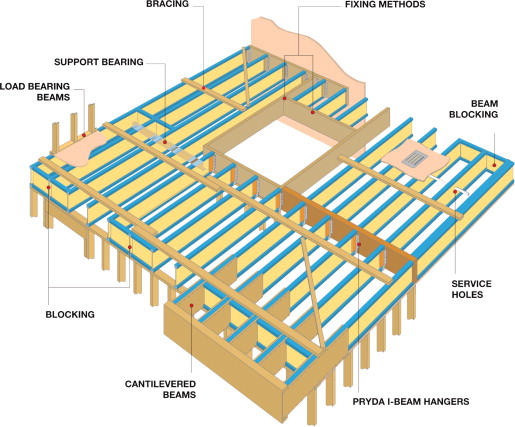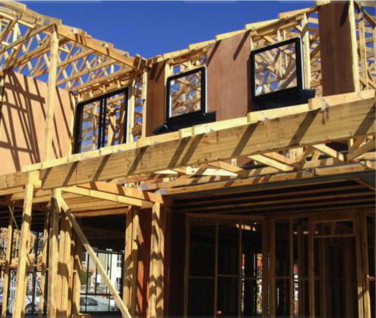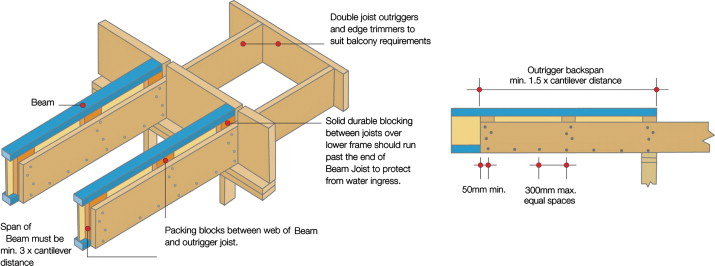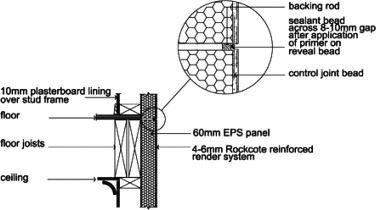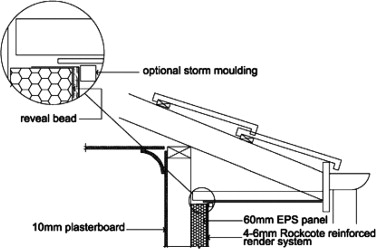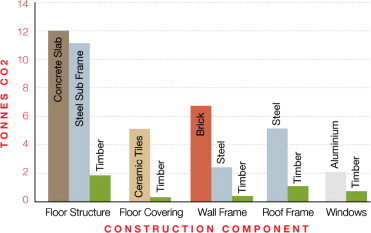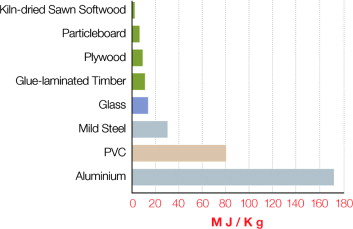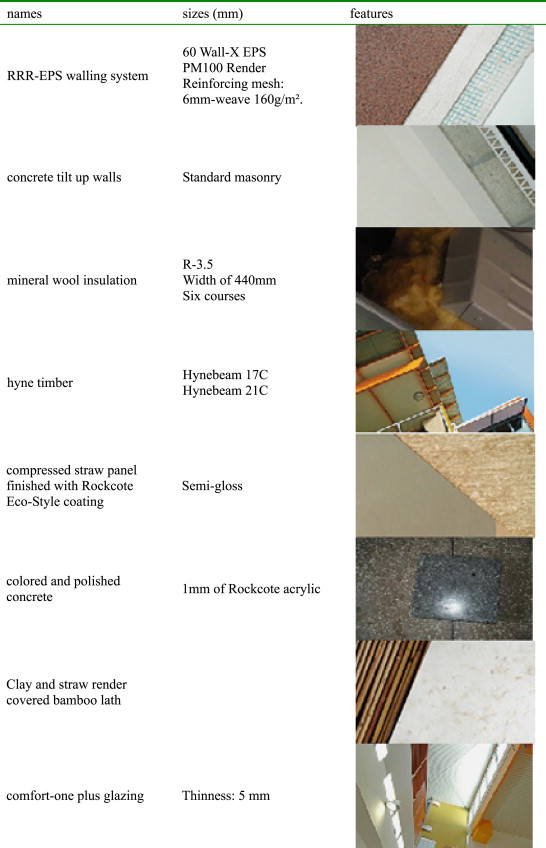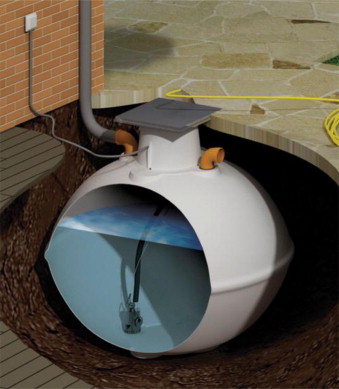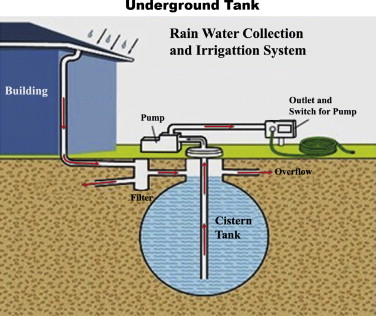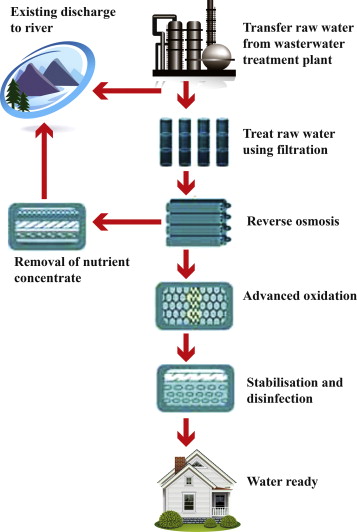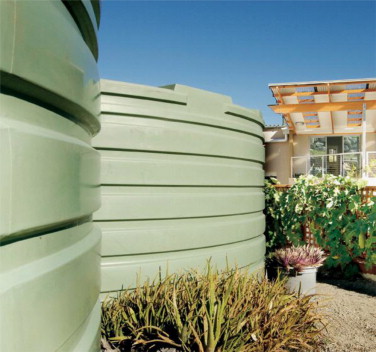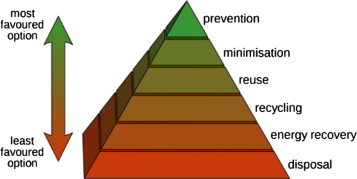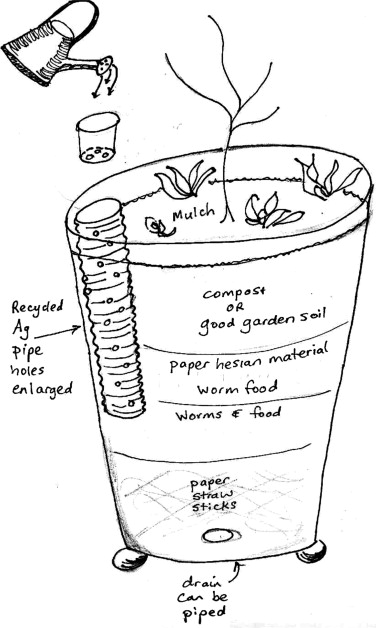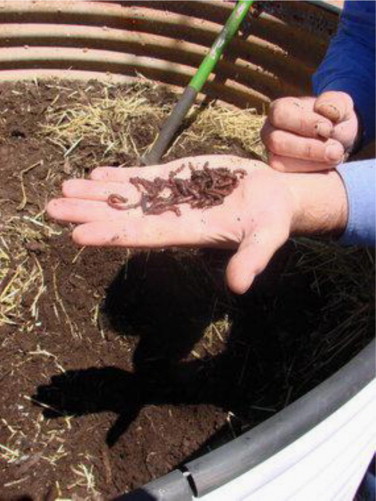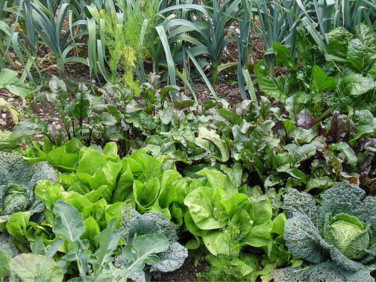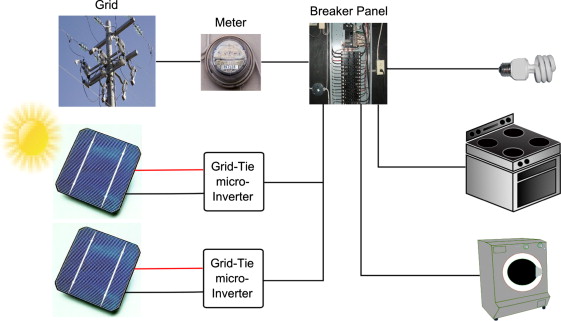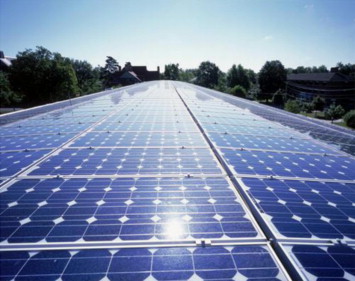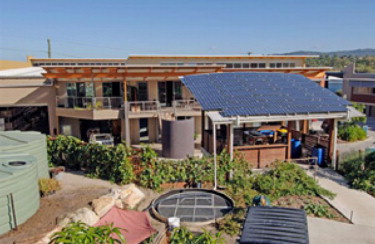Abstract
Recent innovations in modern architectural technology facilitated the development and widespread utilisation of sustainable commercial buildings for sustainable social development. In this research, commercial architecture in Australia is demonstrated as a basis for determining how sustainable technology could be controlled and what the eco-maintenance and materials of major building elements should be. This research also analyzes and describes the sustainable commercial architecture background in Australia. A widely integrated approach is employed in the critical process of general architectural design because commercial buildings must integrate sociology, architecture, and aesthetics.
Keywords
Sustainable technology ; Commercial architecture ; Sustainable maintenance
1. Introduction
The daily activities and building facilities of humans significantly affect the natural environment and its capacity for flora and fauna. A variety of serious problems such as pollution, natural resource consumption, greenhouse gas emission, loss of natural habitat, and waste disposal remain a daunting challenge, but present a great opportunity for planners and architects. Architects believe good design improves the quality of life in all areas of work, rest, and play, thus affecting human health. Architects, as professionals, seek to create a healthy built environment that enhances the natural environment, society, and economy. As a result, sustainable commercial buildings have become a focus in the area of sustainable social development.
1.1. Research methods
A widely integrated approach should be employed in the critical building process because commercial buildings have to integrate sociology, architecture, and aesthetics. Considering the drivers of sustainability within a wider context, this paper takes the Rockcote Design Centre in Australia as an example for distinguishing commercial building features and sustainability. The methods of research focus on building observation, analysis, and critique.
2. Background of Rockcote design centre
The Rockcote Design Centre is in the center of Nerang, a multi-award winning green building that embodies innovation inspired by nature, located between the Gold Coast (an Australian city) tourist strip and the green grandeur of the hinterland. A mixed use project including offices, industries, and retail stores is designed with diversiform architectural functions into a systematic building (Fig. 1 ).
|
|
|
Fig. 1. Rockcote Design Centre. |
Based on the core values of bio-mimicry, radical waste reduction, integration, and non-compromise, the project is planned to achieve the maximum efficiency with the minimum external inputs. The modern architectural style of the Rockcote Design Centre includes numerous large areas with coloured paint and inserted blocks to achieve harmony between the artificial building and the natural environment. The excellent architectural design offers a logical functional layout and various sequential work areas for the staff, consumers, and visitors. The building has a number of passive design features. The design aims at limiting the need for mechanical heating or cooling as far as possible. The result is a commercial development designed and constructed with a passion for the environment and sustainability.
- Year commenced: October, 2003
- Year of completion: October, 2005
- Developer: Rockcote Pty, Ltd.
- Project type (occupation): Mixed commerce, office, and industry building
- Project acquisition value: Approximately AUD$6.8 million
- Gross areas of the building: Site total area: 5680 m2
- Building area: 2850 m2
- Number of floors: Three to five storeys
- Project location: 6 Indy Court Nerang Gold Coast, Queensland, Australia, adjacent to the center of Gold Coast city, one hours drive to the rainforest and Mount Tamborine Village.
2.1. Social content
Nerang is a rapidly developing and thriving modern community in Australia that is attracting different businesses and commercial projects while remaining a suburban village surrounded by farms. Despite the urban sprawl of the Gold Coast, Nerang has retained its natural charm.
General social infrastructures have been offered in the community of Nerang, providing convenient and efficient lifestyles and work conditions for all residents. According to the Nerang Statistical Profile, in 2011, the major industry providing employment was retail trade (13% of employed people), followed by construction (12.1% of employed people) (Australian Bureau of Statistics, 2011 ). The Rockcote Design Centre has significantly contributed to social capital, which aided in the acceleration of the growth of the community as an industrial and commercial center.
The local government has established an efficient and convenient public transport system including buses and trains, which offer quick and easy access from Nerang to all areas of Gold Coast and Brisbane (ABC, 2007) . In addition, people can drive to major beaches and villages through highways and bypass roads in 30 min or less (Table 1 ).
| Destinations | Travel time (by land) (min) |
|---|---|
| Surfers Paradise | 14 |
| North Burleigh Beach | 20 |
| Broadbeach | 17 |
| Gold Coast Airport | 25 |
| Tamborine Mountain | 30 |
| O'Reilleys | 28 |
2.2. Climatic conditions
The regional climatic condition is considered to be the most important factor in architectural design. Rainfall, wind load, and temperature significantly contribute to the performance and maintenance of buildings, particularly high-density commercial buildings. With the increase in various construction activities and functions, more environmental and climatic conditions should be considered in architectural design (Table 2 ). In case of the Rockcote Design Centre, the subtropical climate features of Nerang (hot, bright summers and warm, mild winters) the design integrated outstanding sustainable strategies to reduce climatic influence and reduce energy consumption. Therefore, a thorough climate analysis could aid in the comprehension of architectural characteristics and ecological steps.
| Nerang | Summer | Winter |
|---|---|---|
| Rainfall | 1143—1550 mm | |
| Temperature | 21—28 °C | 12—21 °C |
| Relative humidity | 75—80% | 60—65% |
| Evaporation rate | 155—190 mm | 75—95 mm |
3. Social sustainability
Social sustainability for commercial buildings encompasses labour rights and corporate governance, such that future generations could have the same or greater access to social resources as the current generation.
A fresh and comfortable social environment is a priority outcome that is achieved through a focus on sustainable social development. In the traditional business management mode, a complex social system could always be destroyed. However, the corporate governance system of the Rockcote Design Centre attempts to encourage and reward all employees for teamwork, loyalty, and high work ethic when they exhibit passion and ambition. This method enhances business competitive advantages and improves marketing competitive capability. In the interior social system, a staff newsletter, honour roll, and a regular barbecue for birthday celebrations are organised into a social system to accelerate sustainable commercial project realisation.
The Rockcote Design Centre serves as a working example of how sustainable development practices can be profitably integrated into practical and attractive building developments. Members of the public visit the showroom and coffee shop to browse and relax in a welcoming environment that incorporates a sustainable development resource area featuring leading technologies and products.
4. Sustainable strategies
4.1. Architectural structure
The Rockcote Design Centre comprises several large single-enclosure buildings called longer span. In each of the single buildings, timber beams freely support the rest of the structure. The timber cantilever frame enables the construction of a conveniently curved roof. The timber cantilever frame assembly is non-uniform and facilitates the use of electric hoists (Reid, 1984) .
The timber joist, which is an efficient, light-weight refinement structural beam of 1 m span, is a medium-span parallel chord truss. The timber joist can bear both the externally applied bending moment and the internal moment of resistance. The beams have to be sufficiently stiff to avoid excessive deflection (Fig. 2 ; Fig. 3 ).
|
|
|
Fig. 2. Timber joist structure. Source : (http://www.hyne.com.au ). |
|
|
|
Fig. 3. Timber frame. Source : (http://www.hyne.com.au ). |
In case of the Rockcote Design Centre, the more subtle solution is a cantilever frame employing a column and beam construction. Part of the cantilever frame with self-counter rotation can counteract the edge rotation tendency of the central portion. Therefore, balancing forces act on the beam at the supports. From the bending moment chart, the heavy load is divided into three bending moment peaks. In the building, the position for the supports is 1/6 of the beam length, such that the bending can be redistributed and the peak of bending moment can be impaired (Fig. 4 ).
|
|
|
Fig. 4. Cantilever frame. Source : (http://www.hyne.com.au ). |
The first floor construction of the Rockcote Design Centre can be designed beyond the perimeter columns, called the cantilever slab, which impairs the flooring in the internal bays through its logical structure. In addition, all the columns support the same load and load eccentricity because of the fair division of load-supporting capacity. The light-weight cavity wall filled with insulation material is attached to the cantilever slab edges, which form a curtain wall.
4.2. Building elements and materials
“Appropriate building elements and materials which should be durable, sustainable, and easy to maintain, are significant step of excellent sustainable architectural design (Fleming, 2005) .” The Rockcote Design Centre takes advantage of the opportunity to specify a range of sustainable materials and finishes to minimise the environmental impact of the project. The architect considers the recyclability, embodied energy, emission potential, and durability of each material to achieve an environmentally sustainable project.
Two main principles are considered in the choice of building elements and materials: sustainability and prefabrication. For sustainability, the materials should combine low energy with low or zero toxics. For example, some renewable building materials that are being used include Hyne Timber, wool insulation R-3.5, and bamboo floorings. For prefabrication, the materials or building parts should be produced by factories and then assembled at the site of building. The component building parts should contain a high degree of precision and quality, a clear assembly sequence, and an accurate timetable. In the early design process, the architect of the Rockcote Design Centre established a clear and effective design decision and planning process (Table 3 ) (Fleming, 2005) .
- Rockcote reinforced render-expanded polystyrene panels (RRR-EPS) energy efficient light-weight walling system
The building uses an RRR-EPS walling system as the curtain wall, which is an efficient insulation walling comprising expanded polystyrene panels screened reinforced render with a flexible acrylic finish. RRR-EPS walling indicates that the walling system comprises specific EPS panels installed and coated with the RRR system (Fig. 5 ; Fig. 6 ). RRR-EPS walling offers the convenience of prefabrication and continuous insulation with a genuine seamless structure. RRR-EPS reduces the transfer of heat between the indoor and outdoor structures, thus making the indoor temperature more comfortable and reducing the need for mechanical air conditioning (Rockcote, 2007) .
|
|
|
Fig. 5. RRR-EPS walling system. |
|
|
|
Fig. 6. RRR-EPS walling system for typical soffit detail. |
A series of lighter colours are selected for the external walls to achieve energy efficiency while avoiding direct sunlight. The system also has other benefits such as water absorption, as well as being a fire retardant and biologically inert (Table 3 ).
- Mineral wool insulation R-3.5
The mineral wool insulation R-3.5 comprises mineral wool fibres laid down into a batt with low density that is built into the cavity walls. A width of 440 mm with six courses filling the vertical spacing of the cavity walls exhibits good thermal performance. In addition, mineral wool insulation R-3.5 has a penetration function that enables it to drain water (Table 3 ).
- Hyne timber
Construction materials can be considered truly environmentally friendly depending on where they are sourced and on the environmental impact of their manufacturer. Responsibly sourced plantation timber products are among only a few building materials that actually help reduce greenhouse gas emissions (Fig. 7 ; Fig. 8 ).
|
|
|
Fig. 7. Greenhouse gasses emitted during the manufacture of building materials. Source : “Inwood International Magazine”. |
|
|
|
Fig. 8. Process energy requirements for common building materials. Source : FWPA Australia 2008. |
Exposed beams for natural aesthetic construction and the cantilever roof frame of Rockcote Design Centre used Hyne beam timber, which is a 100% plantation timber. The Hyne timber used in the building ranges from treated beams and pine framing from a sustainably managed forest. By using Hyne timber for construction, the building can be considered a commercial and industrial project that is sustainable and environment-friendly (Table 3 ).
- Compressed straw panel finished with Eco-Style coating
The compressed straw panel finished with Eco-Style coating is used for all internal walls of Rockcote Design Centre, which has a superb design without any risk to the indoor environment and to people. Unlike conventional paint products relying on hazardous chemicals and solvents, Eco-Style coating has sustainable performance characteristics such as low embodied energy, renewable compressed straw panel material, safe with zero volatile organic compounds (VOCs), and environment friendly. The panels are fire, thermal, and impact resistant with a lifespan of at least 30 years. Workability is similar to that of wood as it can be sawn, drilled, routed, nailed, screwed, and glued (Table 3 ).
- Coloured and polished concrete
The Rockcote Design Centre adopts a coloured and polished concrete floor instead of the conventional carpet and tiles. Concrete is cost effective, natural, and extremely flexible. The concrete floor can be easily cleaned and provides a thermal mass feature that retains heat and cooling energy. Polished concrete is fast becoming the choice of flooring for many domestic and commercial settings in Australia. The smooth, high-luster sheen gives the appearance of natural polished stone despite being far more economical, durable, and easy to maintain (Table 3 ).
- Clay and straw render covered bamboo lath
The system is a modern application of traditional materials for a people-friendly interior environment, thus avoiding toxic gas emissions as well as improving indoor humidity through the use of natural materials such as bamboo and straw (Table 3 ).
- Comfort-one plus glazing
All windows, whether common or clerestory, used Comfort-One Plus Glazing for higher insulation and heat reflectivity performance of the building enclosure. This glass is an alternative to double glazing that restricts heat transfer between indoor and outdoor areas while still allowing light in. This feature helps keep the building cool on a hot day by blocking radiant heat and on a cold day, prevents radiant interior heat from escaping through the glass (Table 3 ).
4.3. Utility services and maintenance
A mature sustainable commercial and industrial building should integrate and incorporate a variety of factors and strategies, not only by using green construction materials and structures, but also by reducing the cost of maintenance of sustainable utility services. The Rockcote Design Centre, by considering radical waste reduction, core of bio-mimicry, and non-compromise, attempts to attain the maximum efficiency with the minimum environmental impact. As a result, all utility services of the building not only serve a single purpose but rather achieve high levels of comfort and sustainability, especially in terms of real financial benefits.
- Rainwater supply
The Rockcote Design Centre has integrated a combination of rainwater harvesting, water efficiency, and smart controls into the building to minimise the consumption of high-quality potable water. The buildings footprint is just over 50% of the total 5680 m2 land area. Two 48,000 L capacity underground storm tanks supply water for the daily activities of the Rockcote Design Centre (Fig. 9 ). Based on the hydraulic condition of the building and garden, approximately six times greater water capacity than needed can be stored in the 5680 m2 site of the project. The underground water tank collects rainwater from the roof and stores it underground for future use. With built-in, self-cleaning filters, dirt and solid particles are separated from the water, effectively screening and filtering the water to make it ready for use (Fig. 10 ).
|
|
|
Fig. 9. Underground rainwater tank. |
|
|
|
Fig. 10. Diagram of underground rainwater tank work system. |
By harvesting and using rainwater for toilet flushing, showers, hand washing, and irrigation, the building saves the high-quality, highly treated water for its main purpose: drinking. During periods of rainfall, rainwater overflow is taken from the bottom of the tank. Fresh chilled drinking water is processed using a micro filtration system and supplied to occupants and visitors.
- Waste water treatment
Clean water is becoming more scarce and expensive globally, and polluted sources of surface and groundwater are becoming more common. In many conventional commercial and industrial buildings, approximately 85%–99.9% of what is produced is wasted. In fact, based on the sustainable development concept, waste is a resource that can be reclaimed and reproduced as raw materials through some special processes. Sustainable development demands more eco-friendly approaches, including efficient management of water resources, increased reuse and recycling, and sharp cuts in the use of chemicals such as chlorine.
The key to the buildings high performance is the cyclic control process, which has been specifically developed to make wastewater treatment more reliable and energy efficient (Fig. 11 ). The Rockcote Design Centre treats all sewage and wastewater on site through a series of steps using an OZZI KLEEN EP 20 aerobic system (Fig. 12 ) for the efficient use of available water as well as to reduce demand on local supplies, cut chemical use, and maximise water reuse and recycling. Treated water has been reused for topping-up air conditioning cooling systems, laundry, washing vehicles, equipment, interior cleaning, flushing toilets, and irrigating ornamental gardens.
|
|
|
Fig. 11. Diagram of waste water treatment system. |
|
|
|
Fig. 12. Waste water treatment tank on site. |
- Recycling centre
The recycling center of the Rockcote Design Centre is a key component in a business' sustainability, particularly in terms of the collection, processing or disposal, management and monitoring of waste materials (Fig. 13 ). Solid waste produced by the activities of occupants and visitors is sorted into organic waste and recycled inorganic waste.
|
|
|
Fig. 13. Waste hierarchy (from Wikipedia, the free encyclopedia). |
Recycling inorganic waste is a resource recovery practice that refers to the collection and reuse of waste materials such as empty containers, glass, plastic bottles, and metal. The materials from which the collected items are made can be reprocessed into new products.
Recoverable materials that are organic in nature, such as plant material, food scraps, and paper products, can be recovered through composting and digestion processes to decompose the organic matter. A worm farming and compost system are employed in the recycling center of the Rockcote Design Centre for the processing of organic waste. A worm farm can minimise food waste by turning the buildings organic waste into nutrient-rich fertilizer for the sites plants and soils (Fig. 14 ). Special earthworms called compost worms that thrive in the warm, rich, moist environment eat organic waste and turn it into liquid fertilizer and worm castings (the organic material that has been digested by the worms) (Fig. 15 ). All food scraps are processed and transformed into high-value, natural fertilizer through worm farming. The fertilizer can then be applied to the ecological garden. This process also reduces greenhouse gas. The biological processing in worm farm aims at waste management by controlling and accelerating the natural process of organic matter decomposition.
|
|
|
Fig. 14. Diagram of worm farm contents. |
|
|
|
Fig. 15. Composting worms at worm farm. |
- Ecological garden
When most people think of ecosystems, they tend to conjure images of a rain forest or pristine wilderness. In fact, even in modern and highly modified urban environments, the same systems and forces apply, and people should manage garden ecology to create the best possible environment for plants and humans. Ecological gardening, similar to sustainable living, is about seeing buildings, gardens, and humans as important parts of local and global ecosystems.
The innovative garden design of the Rockcote Design Centre is committed to restoring health and abundance to the land while reconnecting humans with their food and the rest of the natural world. The initial concept considers that an abundant future begins with healthy natural systems. Building soil, capturing and distributing water through integrated systems, and designing sustainable plant communities are integral components of the ecological garden design. GM-modified plants and organic compost without chemicals, pesticides, and herbicides used in the ecological garden serve two main functions. On one hand, the garden provides fresh food (Fig. 16 ) for occupants as well as beautiful flowers and indoor foliage for the offices and showrooms. On the other hand, the ecological garden also provides shade and shelter and removes dust. Ecological gardening ecologically also has the benefit of providing an excellent habitat for native butterflies, birds, and bees as well as many other beings (Fig. 17 ). The ecological garden also helps restore native plants.
|
|
|
Fig. 16. Fresh food in the ecological garden. |
|
|
|
Fig. 17. Habitat for native species. |
The ecological garden does more than grow herbs, flowers, fruit, and vegetables. The garden helps reduce the negative effects of pollution and climate change on a small scale.
- Energy supply
From the initial design stage through completion, the Rockcote Design Centre aims to minimise energy consumption while maintaining a fresh, temperature-controlled environment. This goal has been achieved through a combination of intelligent sensor-controlled devices, louvered windows, and the use of natural light. The key features that work together to form the design centers respiratory system essentially allow the building to “breathe,” providing staff and visitors with a constant level of comfort all year round.
The Rockcote Design Centre is maximising the use of the sun as an energy source as well as for natural light. The photovoltaic (PV) process converts free solar energy, which is the most abundant energy source on the planet, directly into solar power.
Solar electricity harvested by using PV technology has been used for the maintenance of the Rockcote Design Centre. The building has been fitted with a large number of roof-mounted solar PV panels to generate renewable electricity on site. The PV system is made up of solar PV panels, a DC/AC power converter, and a racking system that holds the solar panels, electrical interconnections, and mounting for other components (Fig. 18 ). The electricity generated by these panels (Fig. 19 ) is a renewable resource with zero carbon emissions resulting from its operation, thus ensuring that the building will tread very lightly when it comes to leaving a carbon footprint. The PV array consists of a number of individual PV modules connected together to provide the required power with a suitable current and voltage output for ordinary electrical equipment, such as household appliances, computers, and lighting in the building.
|
|
|
Fig. 18. Diagram of a grid-connected PV system (from Wikipedia, the free encyclopedia). |
|
|
|
Fig. 19. Solar PV panels. |
The Rockcote Design Centre features a beautiful elegant solution: no moving parts and no thousands of kilometres of wires and posts. The building simply employs an array of silicon panels facing the sun to provide the energy needed (80% less energy than a conventional commercial building of this size) (Fig. 20 ). This energy system has a lifespan of at least 25 years.
|
|
|
Fig. 20. Solar PV system. |
5. Conclusions
Excellent architectural design, logical structure, green building components and materials, and outstanding sustainable strategies are integrated and incorporated into the Rockcote Design Centre, thus achieving an environmentally sustainable project in Australia.
Environment-friendly development, ecological design, sustainable building, sustainable development, and low energy consumption buildings are concepts that implicate the same fundamental academic principle: achieving harmony between buildings and the environment, while minimising the impact on natural environment to achieve the maximum financial value. As a result, sustainable buildings should combine theory with practice. Meanwhile, architects as professionals seek to create a healthy built environment that enhances the natural environment, society, and economy. Sustainable development is truly the way to the future.
References
- ABC, 2007 ABC, 2007. Available from: 〈http://www.abc.net.au/〉 (accessed 03.11.07).
- Fleming, 2005 E. Fleming; Construction Technology: An Illustrated Introduction; Blackwell Publishing Ltd., Oxford (2005)
- Reid, 1984 E. Reid; Understanding Building: A Multidisciplinary Approach; Construction Press, England (1984)
- Rockcote, 2007 Rockcote: Australias foremost manufacturer of architectural texture coatings and coating systems, 2007. Available from: 〈http://www.rockcote.com.au/〉 (accessed 05.11.07).
- Australian Bureau of Statistics, 2011 2011 Census of Population and Housing-Basic Community Profile (Nerang), 2011. Australian Bureau of Statistics.
Document information
Published on 12/05/17
Submitted on 12/05/17
Licence: Other
Share this document
claim authorship
Are you one of the authors of this document?

